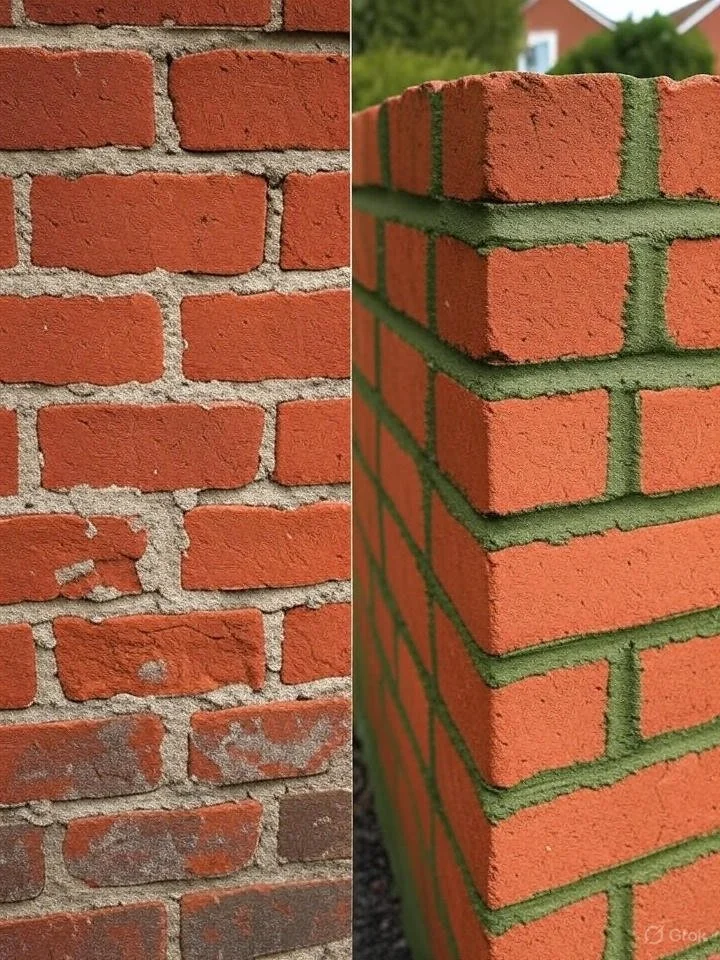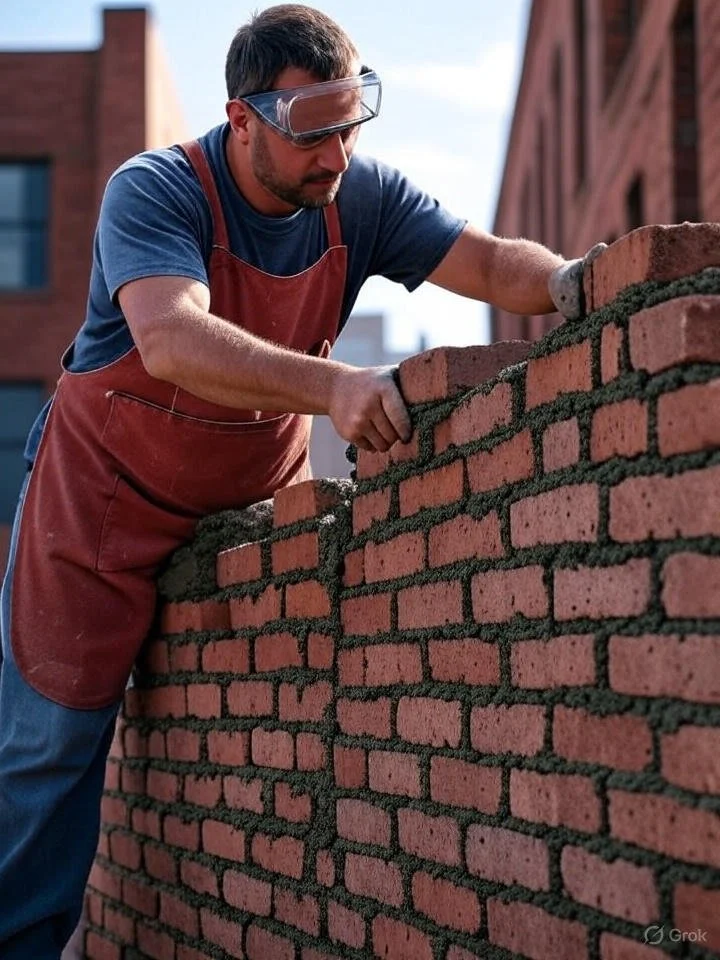Tuckpointing: What It Is, Benefits, and Challenges
What Is Tuckpointing?
Tuckpointing is the process of repairing mortar joints between bricks or stones in a masonry structure. Mortar, the binding material for bricks, can deteriorate over time due to weather, age, or structural movement, leading to cracks, crumbling, or erosion. This weakens the wall and affects its look. Tuckpointing involves removing damaged mortar and replacing it with fresh mortar to restore function and aesthetics.
The process typically includes these steps:
Removal: Old, worn mortar is carefully removed from joints using tools like chisels or grinders, ensuring surrounding bricks remain undamaged.
Cleaning: Joints are cleaned to remove dust, debris, or loose particles, preparing a solid base for new mortar.
Repointing: Fresh mortar, matched to the original in color and composition, is applied to the joints with a trowel or mortar gun.
Finishing: The new mortar is shaped and smoothed to blend seamlessly with the existing structure, creating clean, uniform lines.
Tuckpointing is primarily a functional repair but also improves visual appeal. Historically, it referred to a decorative technique using contrasting mortar colors, but today it focuses on the repair process described above.
Benefits of Tuckpointing
Tuckpointing provides several advantages for maintaining masonry structures. Here are the key benefits:
Restores Structural Strength
Damaged mortar joints can destabilize a wall, allowing water infiltration or brick movement. Tuckpointing reinforces the structure by replacing weak mortar, ensuring stability.Prevents Water Damage
Cracked or eroded mortar allows water to seep into masonry, causing mold, efflorescence (white, powdery deposits), or further deterioration. Tuckpointing seals joints, protecting against moisture issues.Enhances Appearance
Fresh, neatly applied mortar joints give brick or stone surfaces a clean, polished look, rejuvenating an aging facade and making it appear well-maintained.Increases Property Value
A well-kept exterior signals quality to buyers or appraisers. Tuckpointing improves both function and aesthetics, potentially boosting a property’s market value.Offers Long-Term Durability
When performed correctly, tuckpointing can last decades, reducing the need for frequent repairs. High-quality mortar and skilled application ensure resilience, even in harsh weather.
Challenges of Tuckpointing
Despite its benefits, tuckpointing has some drawbacks. Here are the main challenges to consider:
Labor-Intensive Process
Tuckpointing requires precision to remove old mortar, match new mortar, and apply it evenly. This complexity makes it unsuitable for most DIY projects, especially for large or intricate structures.Costly for Extensive Projects
Professional tuckpointing can be expensive, particularly for large repairs or historic buildings requiring specialized mortar. Costs vary based on damage extent, accessibility, and local labor rates.Risk of Brick Damage
Improper mortar removal can harm surrounding bricks, especially in older structures with fragile or soft bricks. Skilled masons are essential to avoid costly mistakes.Difficulty Matching Mortar
Matching new mortar to the existing color and texture can be challenging, particularly for older buildings. A mismatch may result in a patchy appearance.Time-Consuming
Tuckpointing is a detailed process that may take days or weeks, depending on project size. Exterior work may involve scaffolding or weather-related delays, causing disruptions.
DIY vs. Professional Tuckpointing
Many online sources incorrectly suggest tuckpointing is a simple DIY task, like patching a small crack. In reality, it requires specialized tools, knowledge of mortar types, and skill to avoid damaging masonry or creating an uneven finish. Small interior repairs, such as a single fireplace joint, may be feasible for a skilled DIYer with proper tools and research. However, larger projects, like exterior walls or multi-story buildings, demand professional expertise for durable, high-quality results.
Another misconception is that tuckpointing is always a low-cost solution. While small repairs may be affordable, extensive projects can be costly due to labor and material requirements. Unlike some other finishes, tuckpointing’s durability can justify the expense, but homeowners should not underestimate the upfront investment.
Conclusion
Tuckpointing is an essential masonry technique that strengthens brick or stone structures while enhancing their appearance. By replacing damaged mortar, it prevents water damage, restores stability, and improves curb appeal, offering long-lasting results that can increase property value. However, it’s a labor-intensive, potentially costly process that requires professional skill to avoid issues like brick damage or mortar mismatches. Homeowners considering tuckpointing should consult experienced masons to ensure a high-quality outcome that preserves their property for years to come.



